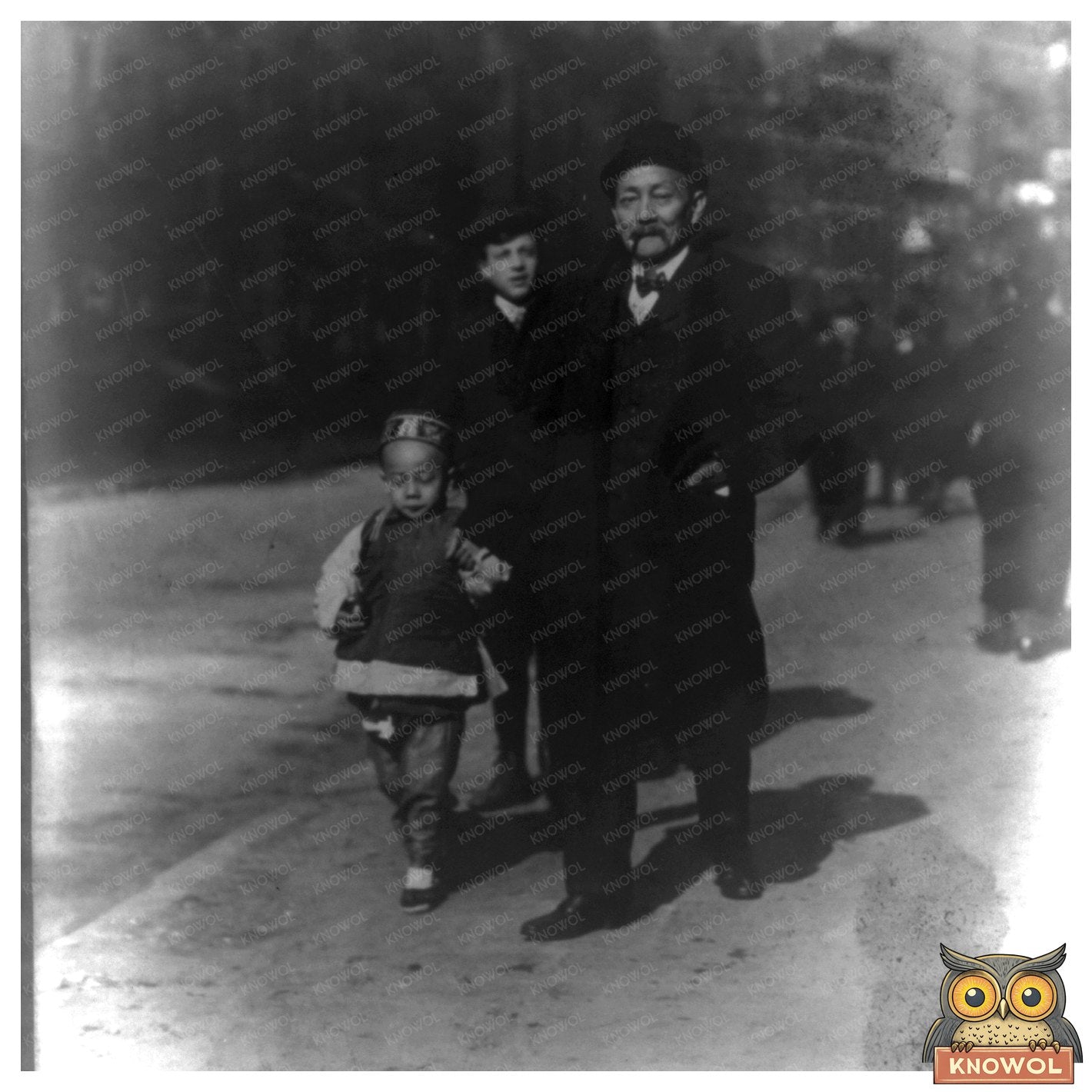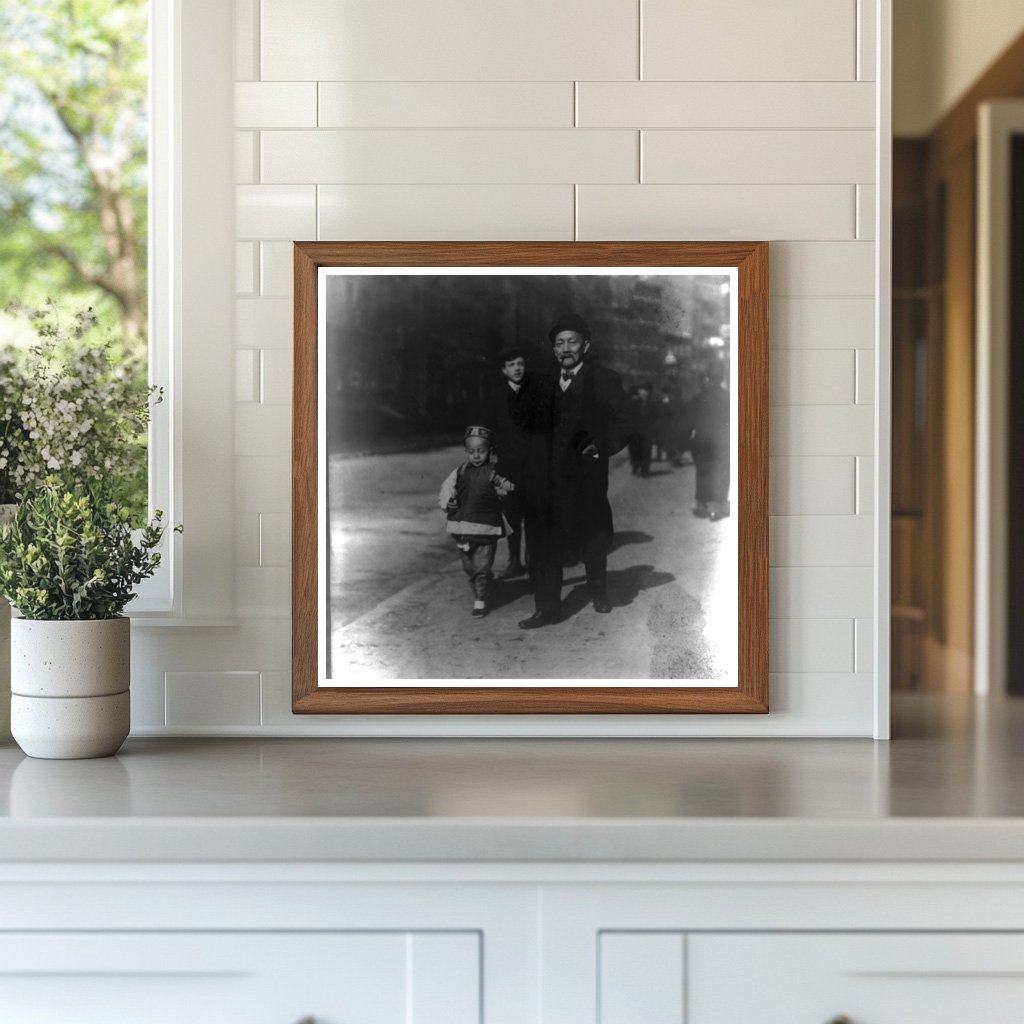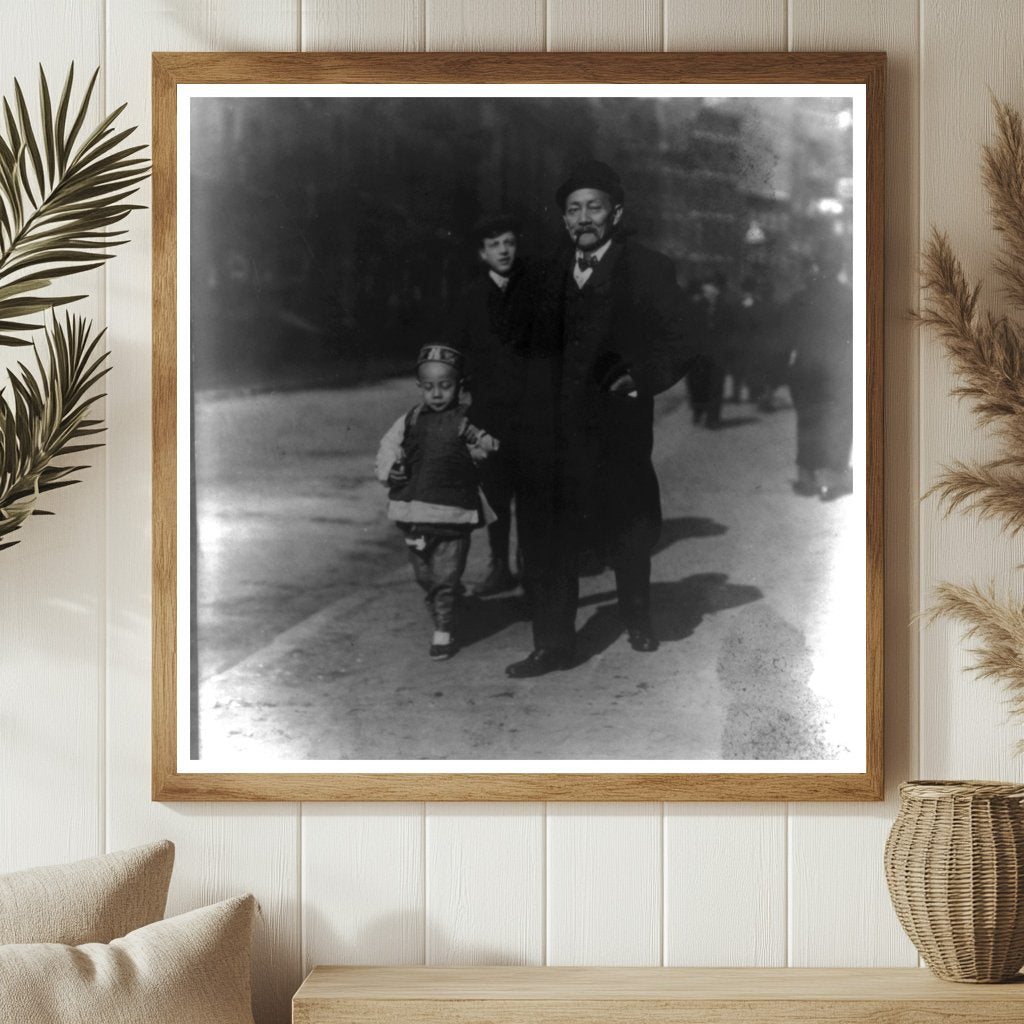


1900s Chinatown: Father and Son Strolling Together
This photograph captures a moment in the early 20th century, specifically between 1909 and 1913, showcasing a Chinese-American father and son strolling through Chinatown, New York City. The scene is set against the backdrop of early 20th-century architecture unique to the neighborhood, featuring distinct buildings that illustrate the cultural heritage and immigrant experience of Chinese Americans during a time of significant change. The image is part of the George Grantham Bain Collection held at the Library of Congress, which is known for its curatorial focus on American life and its diverse communities.
During this time, Chinatown flourished as a vibrant enclave, shaped by the influx of Chinese immigrants seeking opportunities amidst widespread discrimination and exclusionary laws. The Chinese Exclusion Act of 1882 had severely restricted immigration from China, creating a need for established communities like Chinatown to provide social and economic support for newcomers. This photograph serves as a visual document illustrating the familial bonds and daily experiences within that community, highlighting the importance of family in maintaining cultural traditions amidst the challenges of assimilation.
Ultimately, this image not only gives us a glimpse into the personal lives of individuals within the Chinese-American community but also reflects the broader historical narrative of immigration, settlement, and cultural identity in urban America during the early 20th century. Through such photographs, we gain valuable insights into the resilience and everyday lives of immigrants who carved out a space for themselves in an ever-evolving society.

1900s Chinatown: Father and Son Strolling Together
